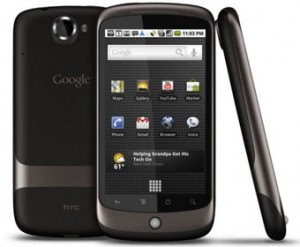Google has announced on a blog posting that a version of its Nexus One handset that is compatible with US carrier Verizon's CDMA network will now not be made available. When the handset was launched in January this year, Google said that it would be partnering with Verizon to distribute the phone "in the future". The announcement raises questions over Google's commitment to a CDMA-based version of the Nexus One.
April 27, 2010

Google has announced on a blog posting that a version of its Nexus One handset that is compatible with US carrier Verizon’s CDMA network will now not be made available. When the handset was launched in January this year, Google said that it would be partnering with Verizon to distribute the phone “in the future”. The announcement raises questions over Google’s commitment to a CDMA-based version of the Nexus One.
Offering no explanation for its abrupt policy reversal on a Verizon-compatible edition of the Nexus One, Google is now advising that anyone who had been keen to buy the device switch their attention to a CDMA Android handset branded by Nexus One manufacturer HTC, the stalwart vendor in the Android sector.
“In the US, if you’ve been waiting for the Nexus One for Verizon Wireless’ network, head over to http://phones.verizonwireless.com/htc/incredible to pre-order the Droid Incredible by HTC, a powerful new Android phone and a cousin of the Nexus One that is similarly feature-packed. It will be available in stores on April 29th,” Google said in its blog post.
In the middle of March this year, fellow US CDMA carrier Sprint announced that it too would be offering the Nexus One, promising to reveal details on availability “soon”. “Nexus One is a powerful device that belongs on a powerful network. This is another step in our continued partnership of innovation with Google,” said Fared Adib, Sprint vice president of product development.
But six weeks on from that announcement there have been no details released by Sprint, or by Google. These developments are sure to raise questions over Google’s enthusiasm for a CDMA version of the handset for the US market. Google has given little indication of the time to market for the Nexus One and it may well be the case that other handsets would fill the gap before a CDMA configuration of Google’s product could be made available. Google’s recommendation of the Droid Incredible would seem to bear this out.
Furthermore, said Informa analyst Jamie Moss: “It appears that certain hardware deficiencies were identified in the Nexus One which have been addressed in the Droid Incredible. Namely a better multi-touch screen, the replacement of the trackball with an optical trackpad and a higher resolution camera. Otherwise, the two devices seem virtually identical in terms of hardware. Which would mean that creating a CDMA Nexus One would be to put in a lot of effort only to result in a device which would be inferior before it is even launched.”
It is also possible that Google is wary of upsetting key OEM partners like HTC, Moss added. There may not be room for two flagship Android devices on Verizon, he said.
Google also announced that Vodafone will shortly become the first European distribution partner for the handset, selling the phone in its stores and through its website from April 30th. This is a deviation from the US distribution strategy, which has seen the Nexus One available unlocked or with a carrier contract only from Google’s own online store. David McQueen, principle analyst at Informa Telecoms & Media, suggested that the shift in distribution model reflects Google’s increasing respect for the position of the carrier in the value chain.
With Google focussed on ramping up volumes of the Nexus One, he said, the distribution model employed in the US has been jettisoned in favour of a scenario that sees the phone more readily available and more likely to be subsidised down to an attractive price point.
About the Author(s)
You May Also Like







.png?width=300&auto=webp&quality=80&disable=upscale)

.png?width=300&auto=webp&quality=80&disable=upscale)
_1.jpg?width=300&auto=webp&quality=80&disable=upscale)



.png?width=800&auto=webp&quality=80&disable=upscale)